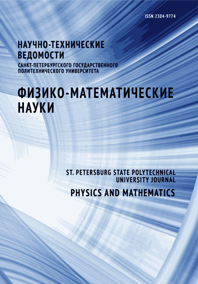The influence of hole states on the electronic and electrostatic properties of 2D layers based on the silicon-germaniumsilicon heterostructure
The performance of a hole qubit in the Si/Ge/Si heterostructure is considered in this work. For this purpose, a quantum mechanical study using density functional theory and the pseudopotential method has been carried out. The zone structure and density of electronic states were constructed for the elementary structure. It was found that the bulk of these states are localized in the energy range from –2 to –4 eV. For the constructed supercell the yield work was calculated and the contribution of electron hole to the electrostatic potential of the system was evaluated. The analysis of the obtained results showed that the change of the yield work in the system is associated with the shift of the energy vacuum level.


